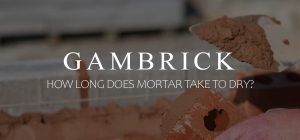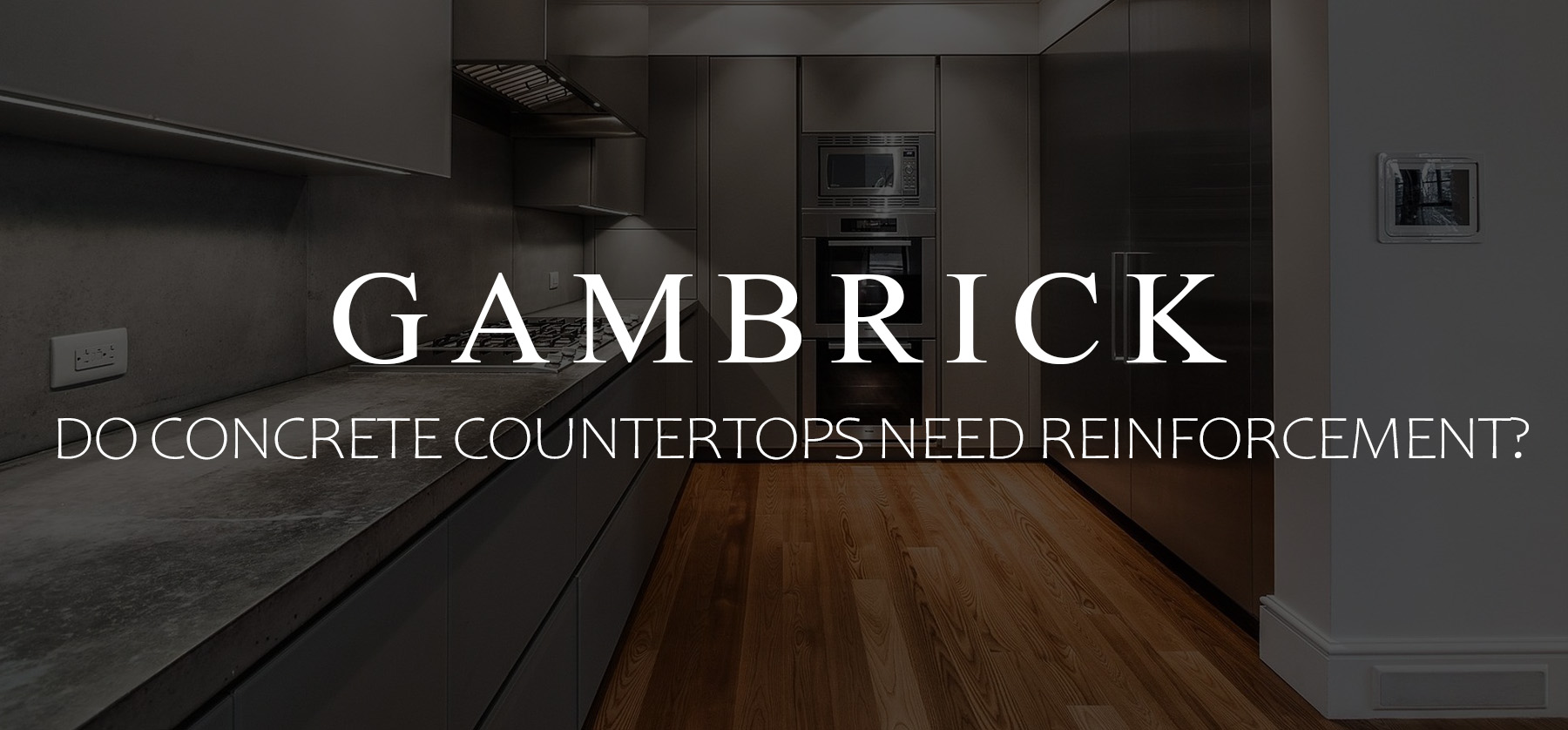
Do Concrete Countertops Need Reinforcement?
Concrete countertops need reinforcement inside to increase its tensile strength and flexibility. Concrete is a very dense, strong, and rigid material with little flexibility. It has high compressive strength so it can carry lots of weight without cracking. But its tensile strength is very low, so concrete countertops can crack easily when bent or twisted. If the countertops bend, twist, or aren’t properly supported, they’ll crack. With reinforcement, a concrete countertop will resist cracking even when not fully supported by the cabinets below. This is beneficial when you have to span sections without a base cabinet, such as a dishwasher space or sink area. The best types of concrete countertop reinforcement are wire mesh and rebar used with a fiber, or chemical additives.
Concrete countertops are typically 1 1/4 inch thick. This is thin for a concrete slab, which makes reinforcement even more important. Concrete contains stones for strength, which sit about 1/4 inch below the surface so the surface can be troweled smooth. This means you only have about an inch worth of stone inside the counter. That’s not a lot, which makes the countertops even more prone to cracking without reinforcement.
The best concrete countertop mix is heavy on cement because it gives the counters a smoother finish. But more cement means less sand and stone. The result is a counter that cracks easily without reinforcement.
Countertops are usually built around wet and or hot areas. Concrete countertops can handle heat when installed in a kitchen. Heat causes expansion and contraction which can cause hairline cracks. Concrete also absorbs water and then dries, which can also cause hairline cracks. Reinforcement helps prevent cracks by strengthening the concrete.
As you can see, there are a lot of reasons why a concrete countertop needs reinforcement.
Why Concrete Countertops Need Reinforcement
Concrete is a very strong and versatile building material, but it has some flaws. One of the biggest drawbacks concrete has is its low tensile strength which causes it to crack. When any type of concrete has to span distances while unsupported, which includes countertops, its likely to crack.
The reason concrete countertops need reinforcement is to overcome its natural weaknesses. Reinforcement adds flexibility and tensile strength. Once a slab is reinforced, it can span greater distances without cracking.
Having reinforcement is a huge benefit for countertops because base cabinets are not always completely level and flat. They can provide uneven support which is bad for concrete. They can also have sections without support such as a sink base or dishwasher area. In these sections the counter will have no support at all.
Moisture is another reason why concrete countertops crack. Concrete is porous and absorbs moisture like a sponge. Most counters are built around wet areas which means the concrete can absorb water and then dry out. This cycle can cause hairline cracks called craze cracks. Reinforcement helps prevent these cracks be strengthening the concrete.
Reinforcement allows the concrete to be poured thinner. Most countertops are just 1 1/4 inch thick which is way too thin without some sort of reinforcement inside.
Concrete countertops need reinforcement in order to span long distances. Stone counters are cut out of slabs and have seems where slabs meet. But concrete countertops are typically poured on site, so you don’t need to have any seems. With proper reinforcement and support, a concrete countertop can span long distances without any seems or joints.
To sum this up, concrete countertops need reinforcement to strengthen the slab and prevent cracks.
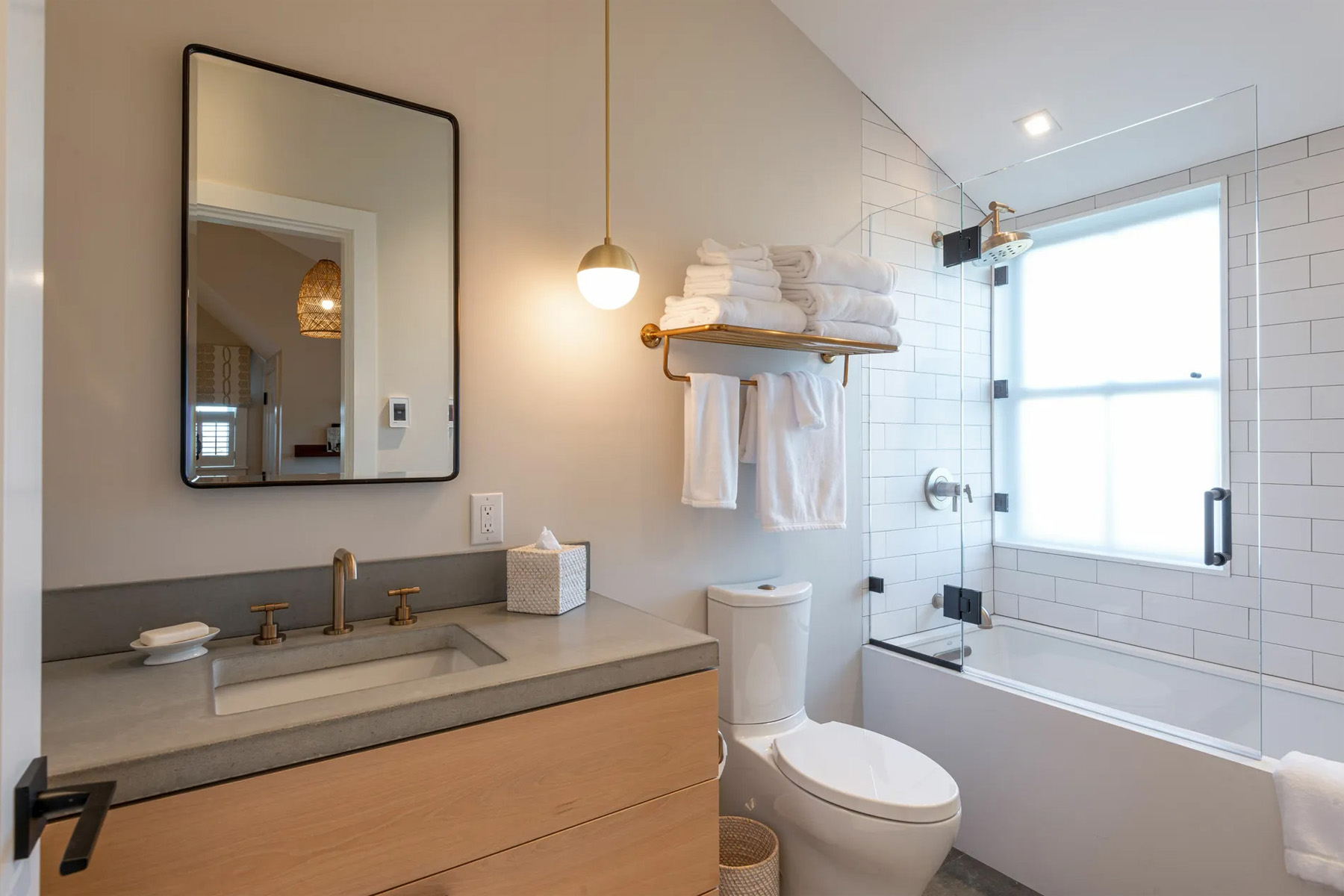
Types Of Concrete Countertop Reinforcement
There are a few different types of reinforcement you can use in a concrete countertop that do different things. The best type of reinforcement for concrete countertops are wire mesh or rebar, you can’t do without them. They’re what supports the slab and reduces cracks.
Secondary reinforcements add additional characteristics to the concrete such as crack resistance, flexibility and hardness. But they’re not 100% necessary.
Additives like fiber and chemicals can be mixed into the wet concrete. They become a part of the concrete slab and enhance it’s strength, flexibility and/or crack resistance.
Metal reinforcement like rebar and wire mesh are placed in the middle of the countertop slab as you pour it. They both add flexibility and strength.
Steel Wire Mesh & Rebar
Steel rebar and galvanized wire mesh are both great ways to reinforce concrete countertops. Both types of metal sit in the middle of the countertop slab. To install them, I pour half the slabs thickness, insert the metal reinforcement, and then pour the top half of the slab. This ensure that they sit in the exact middle of the concrete.
If metal reinforcement sits too high or too low inside the slab, the concrete will be more likely to crack. To be effective, metal reinforcement needs to sit in the middle of the slab.
- Wire mesh is a series of metal wire, about 1/8th inch thick, welded together. It looks like a grid and comes either in panels or rolls. I recommend buying the panels. If you buy the roll, you’ll have to flatten it out before placing it inside the slab. This is hard to do because once you unroll the mesh it tries to roll itself back up.
- Steel rebar should be no thicker than 3/16 inch. Tie rebar together using wire.
Pro Tip: Use wire mesh for sections of countertop that are supported by base cabinets. I only use rebar for long unsupported spans like around a sink, over a dishwasher or to build an island overhang. Don’t stack rebar on top of each other when you tie them together if the slab is only 1 1/4 inch thick. To overlap and tie rebar you need at least a 2 inch thick countertop.
Choosing The Right Metal Reinforcement
Steel rebar is a strong reinforcement material, but for many concrete countertops it’s too thick. Standard 3/8 inch, 1/2 inch or 3/4 inch rebar is too big for a typical 1 1/2 inch thick concrete countertop. No material more than 3/16 inch in diameter should be used in a countertop less than 3 inches thick.
The rebar design is important too. Use a rebar with a ribbed edge. Smooth rebar doesn’t hold the concrete as well because there’s nothing for it to grip.
Ladder wire and wire mesh are both great reinforcement material. They’re both strong and thin enough to use in a standard 1 1/2 inch countertop. The major difference between the two is the overall shape and gauge.
- Ladder wire is 9 gauge structural wire with a narrow parallel set of strands. It’s great for reinforcing complex shapes or cutouts. The fixed spacing and thicker gauge of welded wire mesh requires more cutting and splicing.
- Wire mesh is large, open mesh, and often 10 gauge in diameter or thicker. It generally has enough tensile strength to reinforce large slabs when properly supported by base cabinets. I use it a lot for rectangular countertops without any cutouts.
I typically use a combination of materials. Wire mesh is easier to work with and provides better support if there’s no cutting and splicing involved. I like 2.1 gauge for more strength. Use ladder wire or thinner mesh in areas that need cuts.
Structural carbon fiber is relatively new to concrete countertops but I don’t use it. Carbon fiber was originally developed for the precast industry. It has high tensile strength and is thin enough to fit in tight spots. I’ve tested it and so far I prefer using metal.
Fiber & Chemical Additives
In addition to metal reinforcement, you can also include additives inside the wet concrete mix. Additives can be added into the dry mix or the wet mix. I prefer the add them into the wet mix. I throw whatever additives I’m using right into the cement mixer or tray before I pour. The key to using them successfully is to thoroughly mix them into the concrete.
You want an even distribution of additives throughout the slab. This is achieved by mixing the concrete really well once the additives are in. It’s bad if the additive distribution is uneven. For example, if one section of slab has fiber and another doesn’t, you’ll end up with a weak area that’s more likely to crack.
Synthetic fibers can help control shrinkage which reduces hairline cracks. They’re made of polypropylene and nylon. They’re very small and disappear into the concrete. Once you mix them in you typically can’t see the fibers.
You can also use fiber mesh rolls that can be cut to size. Sometimes this is referred to as scrim. I prefer synthetic fibers because they evenly distribute into the slab. Mesh rolls stay in the middle of the concrete.
Another choice is alkali-resistant (AR) glass fibers. They’re higher in tensile strength than synthetic materials but more expensive. Generally fibers can’t be seen in the finished countertop if they’re mixed thoroughly and used in the correct amounts.
No matter what reinforcing you use, hairline cracks can still occur. So it’s important to slow the concrete’s drying time down by misting the surface of the slab. This is covered in another article.
Chemical additives can also be used to increase the concrete’s strength, crack resistance, hardness and flexibility. They’re a liquid that you pour into the concrete wet mix.
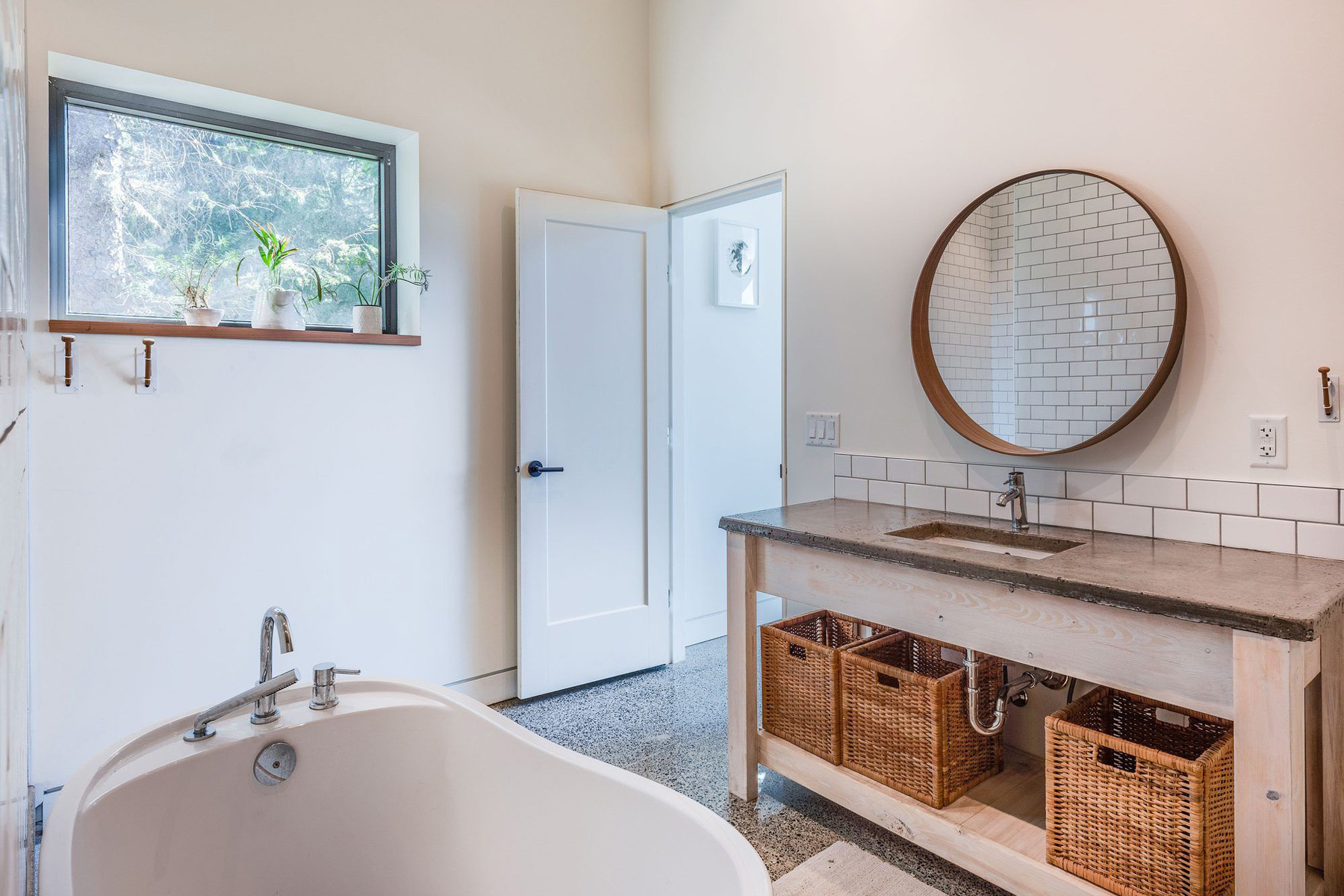
How Much Reinforcement Does A Concrete Countertop Need?
How much reinforcement does a concrete countertop actually need? Unfortunately, there’s no simple answer that applies to every countertop. Each concrete countertop is unique with their own span, width, thickness and load requirements. And the properties of the concrete mix ratio used is a factor too. because not all concrete mixes are the same.
What’s important to understand is that concrete countertops are beams, not slabs on grade. If you understand where the loads, compression and tension will be, you can figure out the proper reinforcement design.
When I pour concrete countertops, I use a combination approach and always stay on the safe side. I’d rather have countertops that are too strong than not strong enough. I include fiber and/or chemical additives inside the wet concrete mix in addition to wire mesh and/or steel rebar in the middle of the slab.
As a primary reinforcement, I always use wire mesh in areas supported by a base cabinet. I use rebar for sections that span a dishwasher or sink cabinet because those sections are not supported. If there’s an island overhang, I use rebar.
Most countertops are 1 1/4 inch thick, but if the counters are really long or have bends, I sometimes increase the thickness to 1 1/2 inch to 2 inches. The added thickness lets me use more rebar.
As a secondary reinforcement I always use fiber to decrease shrinkage. It helps reduce hairline cracks. I also use a chemical strengthener because the concrete mix ratio I use for countertops is heavy on the cement, which is more likely to crack.
How To Place Concrete Countertop Reinforcement
Reinforcement should generally be placed in the middle of the countertop. There should be at least 1/2 inch of concrete between the reinforcement and the concrete surfaces on all side, top and bottom.
Placing reinforcement in the middle provides tensile strength to resist cracking over large spans and helps resist hairline cracks caused by shrinkage.
The same is true if your concrete countertop has a cantilever. An overhang is very common when building a kitchen island. We typically create an 18 inch to 24 inch overhang for stools and seats. I use a 3/16 inch rebar dead center in the slab which allows at least 1/2 inch of concrete to the top and bottom surface. If the countertop is thicker than the standard 1 1/4 inch, I use thicker rebar.
Remember, thicker concrete provides more compressive strength, but it’s heavier and needs additional reinforcement. Especially for overhanging areas that are unsupported.
The way I set my wire mesh or rebar in the middle of the slab is very simple. I pour half the concrete first, place my reinforcement and then pour the rest of my concrete. I don’t use chairs or anything to support the reinforcement like I do when pouring a foundation. This method is much cleaner and stronger.
To support large overhangs, I use L bar. I anchor one end of the L rebar into the cabinets and extend the other out over the cantilever. I’ll usually double the L bar so I can anchor at different points on the cabinet for more support. The spacing I use for the rebar is 16″ on center.
In some cases I’ll use both rebar and a wire mesh together. But this requires a thicker slab of at least 1 1/2 inch.
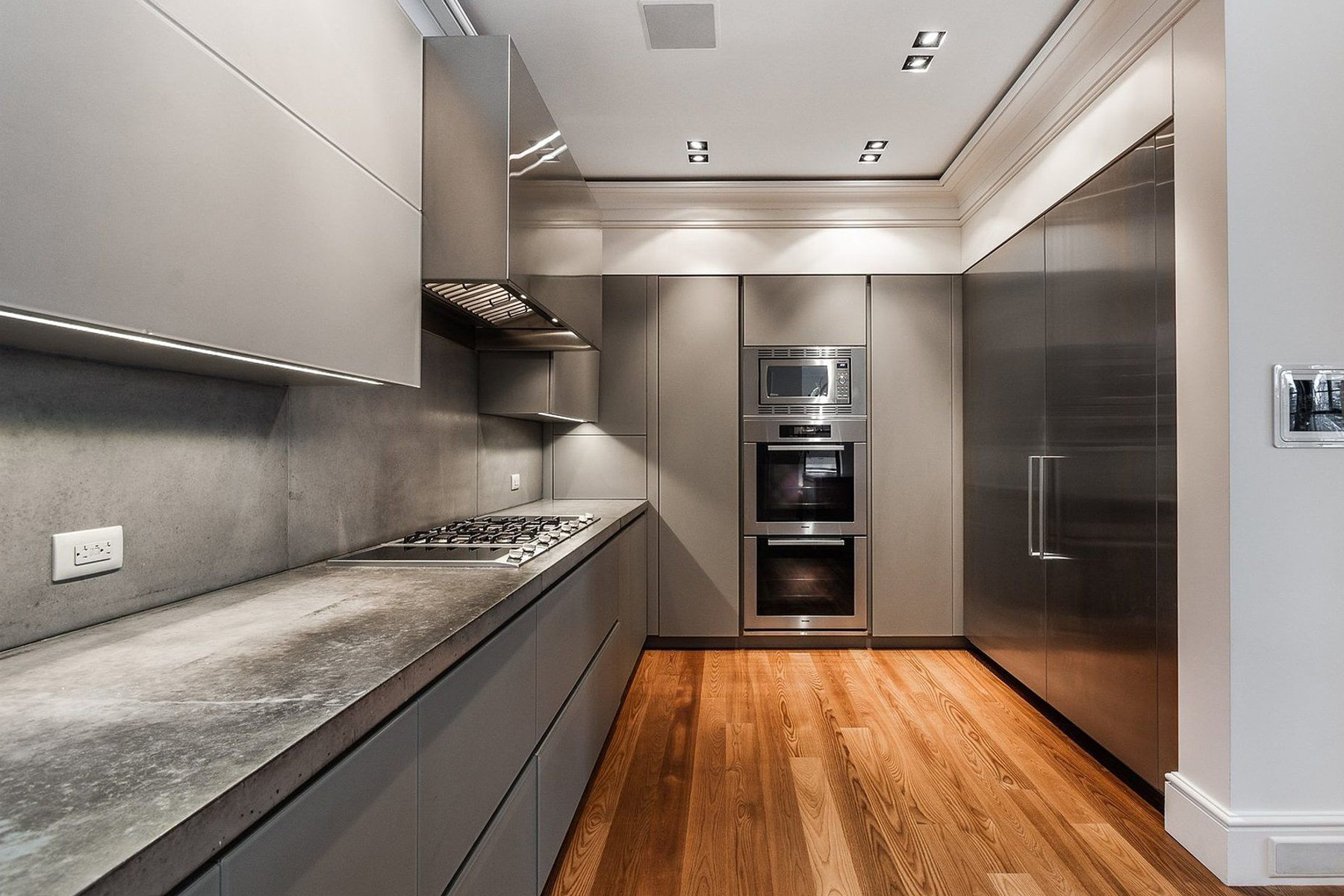
Does Reinforcement Affect The Appearance Of Concrete Countertops?
If you use the correct type of reinforcement and install it the right way, you shouldn’t be able to tell that it’s there. Make sure the metal you use is steel or galvanized. If not it’ll rust.
A problem called ghosting (or shadowing) can occur if the metal is pushed too close to a surface or when the concrete is poured through the reinforcement. This pushes the aggregate aside and forms a trench that fills in with the cement paste. The result is that the composition of the concrete above the reinforcing material is different than the rest of the concrete. Because those areas of concrete have a different composition, they’ll cure and take stain differently.
However, ghosting is eliminated if you place the reinforcing correctly because concrete won’t be poured through it. And it will be dead center in the middle of the slab.
In some rare cases you can get some of the fiber poking out of the surface. These can be sanded down or burned off.
If a concrete countertop is built correctly, the reinforcement you use inside the slab and mix should have no impact on its appearance.
How Much Support Do Concrete Countertops Need?
If a concrete countertop is built correctly, with the right concrete mix ratio and reinforcement, it shouldn’t need any additional support. The concrete mix you use and internal metal reinforcement are enough to support a concrete countertops weight. And the load you place atop the counter. They’re similar in strength to a soft stone like marble and don’t easily crack. Assuming they’re built correctly.
You need to use the proper concrete mix to make countertops. It should contain enough cement to achieve a smooth finish but still be strong enough to carry a load and not crack. But more cement means weaker concrete. The way to balance this out is by using a chemical hardener and metal reinforcement like wire mesh or rebar.
If you’re building concrete countertops on an island with a cantilever, I recommend using L bar that’s anchored into the cabinet. If the counter is the standard 1 1/4 inch thick, use no more than a 3/16th inch rebar. You need at least 1/2 inch from the edge of the rebar to the edge of the counter on all sides. Anything less than that will cause a crack.
If the counter is thicker concrete, 1 1/2 inch and up, I use thicker rebar or rebar with wire mesh. But don’t double up on the reinforcement unless the concrete is thicker.
If your mix ratio and ingredients are right, and you use the proper amount of metal reinforcement, your concrete countertops won’t need additional support. It will be able to support its own weight and the load you place atop it without brackets or legs.
Most of my countertop overhangs are 16 – 24 inches. I wouldn’t recommend going any bigger than that. If you do, you may need some additional support.
What Size Rebar For Concrete Countertop?
A standard size concrete countertop is 1 1/4 inch thick. You need to keep at least 1/2 inch from the edge of the rebar inside the counter from all surfaces of the counter. This means you should use rebar no thicker than 3/16th inch.
That standard size rebar for a concrete countertop is 3/16th inch. However, if the concrete countertop is thicker, you can increase the diameter of your rebar. But remember, you have to keep the minimum 1/2 inch of concrete between the countertop surface and rebar. If rebar is placed too close to the surface of the counter, it’ll crack or cause discoloration. This is called ghosting.
How To Support Concrete Countertops Over Unsupported Spans
Almost all countertops in kitchens and bathroom have unsupported spans where there’s no base cabinet. This is usually where a sink is installed or an appliance. Dishwashers, garbage disposals and mini fridges are all blank spaces without a base cabinet to support the countertop.
In areas where there’s no countertop support, I use rebar. Insert lengths of 3/16th inch rebar across the span inside your countertop. Keep the rebar at least 1/2 inch from the edges of the counter. If you place the rebar to close to any surface of your concrete countertop, you’ll cause a crack or discoloration.
In areas where your countertops are supported by a base cabinet, you can use thinner wire mesh or ladder wire.
Summary: Do Concrete Countertops Need Reinforcement?
Concrete countertops need reinforcement inside to increase its tensile strength and flexibility. Concrete is a very dense, strong, and rigid material with little flexibility. It has high compressive strength so it can carry lots of weight without cracking. But its tensile strength is very low, so it cracks easily when bent or twisted. If the countertops bend, twist, or aren’t properly supported, they’ll crack.
With reinforcement, a concrete countertop will resist cracking even when not fully supported by the cabinets below. This is beneficial when you have to span sections without a base cabinet, such as a dishwasher space or sink area. The best types of concrete countertop reinforcement are wire mesh and rebar used with a fiber, or chemical additives.
Concrete countertops are typically 1 1/4 inch thick. This is very thin for a concrete slab, which makes reinforcement even more important. Concrete contains stone which gives it strength. The stones have to sit about 1/4 inch below the surface so that the counter can be troweled smooth. This means you only have about an inch worth of stone in the counter. That’s not a lot, which makes them even more prone to cracking without reinforcement.
The best concrete countertop mix is heavy on cement because it gives the counters a smoother finish. But more cement means less sand and stone. The result is a counter that cracks easily without reinforcement.
Countertops are usually built around wet and or hot areas. Concrete countertops can handle heat when installed in a kitchen. Heat causes expansion and contraction which can cause hairline cracks. Concrete also absorbs water and then dries, which can also cause hairline cracks. Reinforcement helps prevent cracks by strengthening the concrete.
If you have any questions or comments about concrete countertops, email any time.

John Mazzuca | About | More Posts |
Custom Home Builder
John Mazzuca is a custom home designer and builder at Gambrick with over 25 years experience in the construction industry. John has designed, built and/or remodeled hundreds of homes, small buildings, and commercial projects. He writes about business, real estate, home building, and household electronics. His work has been featured in Fox Business, Better Homes & Garden, House Beautiful, and more.


